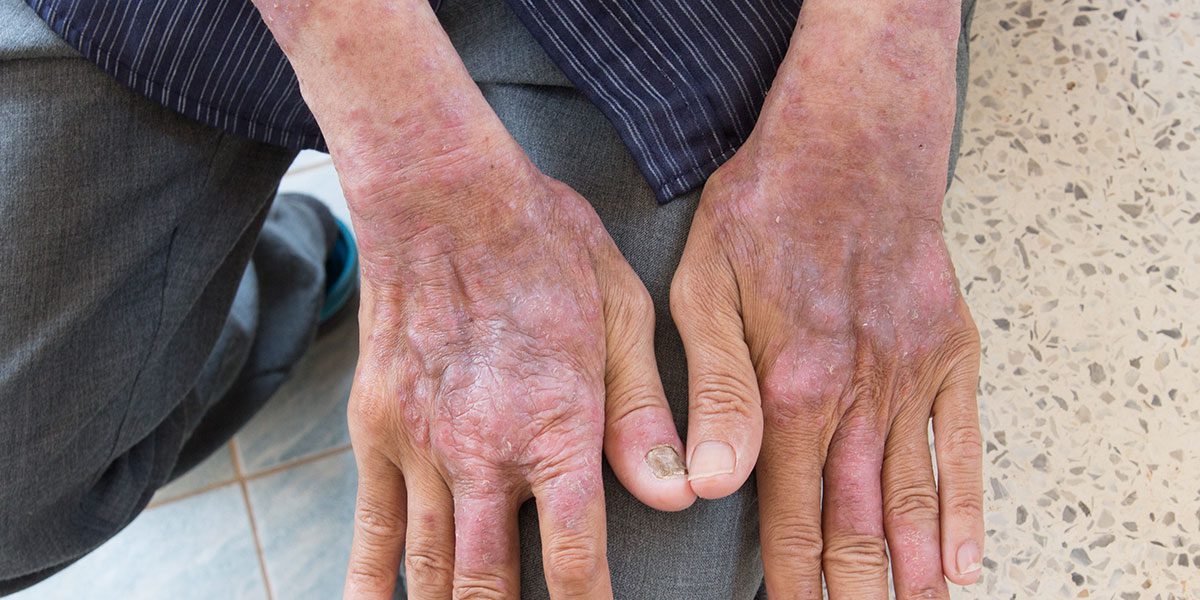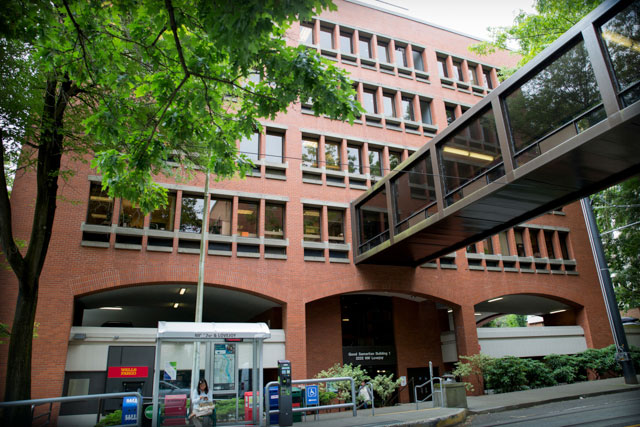Actinic Keratosis Treatment

Actinic Keratosis are considered a precursor (pre-skin cancer) or very early stage squamous cell skin cancer, which affects the upper layers of skin. Actinic keratosis are caused by prolonged, chronic exposure to the sun and are most often found on the face, the chest, the nape of the neck and the back of the hands and arms. The skin can look red or brownish in these areas and will be slightly raised, roughened or scaly. Actinic keratosis are often slightly tender to touch, especially when exposed to sunlight. There are several treatments available in Portland for the treatment of actinic keratosis including cryotherapy (liquid nitrogen), a superficial surgical treatment called curette and desiccation, topical chemotherapy creams, topical “biologic” creams as well as photodynamic therapy treatment.
Actinic Keratosis Treatment
Cryotherapy for Actinic Keratosis
They are usually treated by freezing with liquid nitrogen, which causes a blister to form under the lesion, then peels off as the area heals. Liquid nitrogen is a cold, liquefied gas with a temperature of 196 degrees below zero Celsius (-321 Fahrenheit). Liquid nitrogen is used to destroy actinic keratosis. Liquid nitrogen causes stinging and mild pain while the growth is being treated. It freezes and then thaws. This process takes less than a minute but the discomfort can last from five to thirty minutes.
Some hours after the liquid nitrogen treatment, the actinic keratosis will become swollen and red and may form a blister. Once the blister forms applying Vaseline to the area will help it heal without crusting and scabbing. You can wash your skin as usual and use make up or other cosmetics. If clothing irritates the treated area you may cover it with a small bandage.
Photodynamic Therapy (PDT) for Actinic Keratosis
A topical agent, Levulan, is applied to the pre-skin cancer (actinic keratosis) and the skin around it for 1 – 2 hours the treated skin is exposed to Blu light that activates the Levulan and selectively destroys actinic keratosis while causing minimal damage to the surrounding skin.
Topical Chemotherapy Agents for Actinic Keratosis
These treat both visible and invisible lesions with minimal risk of scarring. Common topical agents in Portland include Imiquimod and Fluorouracil. Fluorouracil is a chemotherapy treatment that targets cancer cells and kills them. Fluorouracil has been around for decades and is very useful for treating pre-skin cancers.
Fluorouracil (Efudex/Carac)
 Fluorouracil cream is used to treat actinic keratosis. Fluorouracil is in a class of medications called anti-metabolites. It works by killing fast-growing cells such as the abnormal cells (cancer cells) in actinic keratosis.
Fluorouracil cream is used to treat actinic keratosis. Fluorouracil is in a class of medications called anti-metabolites. It works by killing fast-growing cells such as the abnormal cells (cancer cells) in actinic keratosis.
Fluorouracil is applied to the affected areas twice a day for 10 – 11 days to the face. For the scalp and chest it may take 2 weeks. Lesions on the arms and legs make require 2 to 4 weeks of treatment.
During the first few days of treatment, the actinic keratosis and surrounding areas will feel irritated and look red, swollen, and scaly. This is a sign that Fluorouracil is working.
Apply Fluorouracil cream with your finger and be sure to wash your hands well immediately afterwards. Do not cover the treated areas with a bandage or dressing.
Do not apply Fluorouracil cream or topical solution to the eyelids or the eyes, nose, or mouth.
Imiquimod
Imiquimod is called a biologic agent because it turns up the patient’s own immune system to fight off the cancer and pre-cancer cells. Imiquimod was first introduced to treat skin cancers in the late 1990’s.
Imiquimod is a cream that when applied to the precancerous lesions, increases the body’s own immune system to fight the abnormal cells. This process provides a non-surgical option to treat the cancer and/or pre-cancerous cells. Imiquimod cream is FDA approved to treat superficial Basal Cell Carcinoma, Actinic keratosis, as well as squamous cell carcinoma and even malignant melanomas.
Imiquimod: Treatment for pre-cancers (actinic keratosis) with Imiquimod is between 8 and 12 weeks.
- Open the packet with scissors or a simple pinhole. Gently squeeze the pouch and with a toothpick, remove a tiny amount of cream to cover the area you wish to treat.
- Place the small amount of cream on the center of the area to treat.
- Do NOT spread the cream to the surrounding tissue as this may cause unnecessary irritation.
- Apply the Imiquimod cream three times a week to start – usually Monday, Wednesday and Friday. Stop application when a rash or redness develops at the site of application. Wait for 10 days until the redness or rash clears, then restart the Imiquimod cream. Continue starting and stopping the Imiquimod as directed for a total of 12 weeks.
- After each application fold the packet over and store it in a plastic bag. Ignore the “single application” labeling.
Imiquimod Treatment Reactions
After 2-4 applications the skin may become red and scaly, heaped up and crusty or weepy and crusty. This is an anticipated side effect. If no reaction occurs, increase to 5 days for a week, then daily for a week. Some people do not react at all. On occasion one can get a very big aggressive inflammatory reaction with extensive crusting. This response does fade after discontinuation of product and any residual skin changes will fade.
Expected Results of Actinic Keratosis Treatment
At the end of treatment the skin in the pre-cancerous area usually looks smooth and soft. In the areas where you have had actinic keratosis treated a lighter and even mild scarring may develop. If the pre-cancer was large enough to destroy tissue, there may be a depression left behind. It does take at least 3-4 months for color changes to blend with the rest of the skin and there may be areas of blotchy pigmentation where the color is just not quite even. The cosmetic results are generally better than surgery.
Learn more about actinic keratosis treatment at the American Academy of Dermatology.

